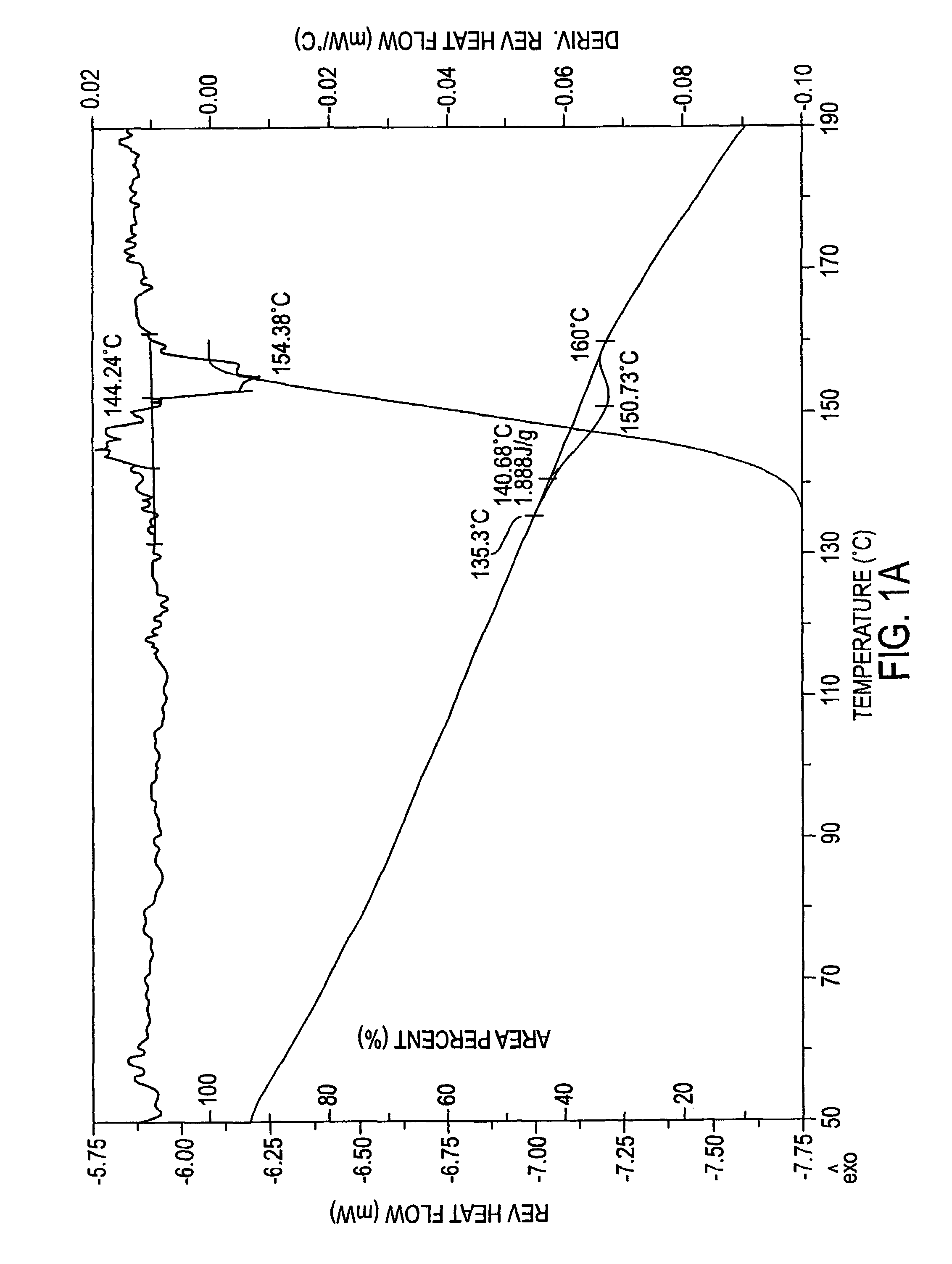Process for making enzyme-resistant starch for reduced-calorie flour replacer
- Summary
- Abstract
- Description
- Claims
- Application Information
AI Technical Summary
Benefits of technology
Problems solved by technology
Method used
Image
Examples
example 1
Preparation of Resistant Starch Ingredient and Analysis
[0136]In this example, an enzyme resistant starch type III bulking agent, or resistant starch ingredient, comprising resistant starch type III is prepared and analyzed to determine the yield of resistant starch type III and the melting profile of the resistant starch type III:
1A. Preparation of Resistant Starch Ingredient or Bulking Agent
[0137]In this example, an enzyme resistant starch type III bulking agent, or resistant starch ingredient, was produced using Hylon VII as a staring starch. The Hylon VII is a corn starch containing about 70% amylose, and is a product of National Starch and Chemical Company, Bridgewater, N.J. The moisture content of the Hylon VII was about 11% by weight. Hylon VII in an amount of 150 parts by weight (wet basis) and 450 parts by weight of distilled water were admixed in three Teflon® coated baking pans (batches A, B, and C) to obtain a substantially homogenous starch slurry. The weight ratio of th...
example 2
Preparation of Resistant Starch Ingredient or Bulking Agent
[0210]In this example, an enzyme resistant starch type III bulking agent, or resistant starch ingredient, comprising resistant starch type III is prepared and analyzed to determine the yield of resistant starch type III and the melting profile of the resistant starch type III bulking agent:
2A. Preparation of Resistant Starch Ingredient or Bulking Agent
[0211]In this example, an enzyme resistant starch type III bulking agent, or resistant starch ingredient, was produced using Hylon VI (about 70% by weight amylose) as a starting starch. The moisture content of the Hylon VII was about 11% by weight. Hylon VII in an amount of 125 parts by weight (wet basis) and 375 parts by weight of distilled water were admixed in a Teflon® coated baking pan to obtain a substantially homogenous starch slurry. The weight ratio of the starch to the water was about 0.33:1. The starch slurry was autoclaved at about 110° C. for about 15 minutes to at...
example 3
Preparation of Resistant Starch Ingredient Using Pullulanase
[0221]In this example, an enzyme resistant starch type III bulking agent, or resistant starch ingredient, comprising resistant starch type III is prepared and then reacted with pullulanase to increase the yield of resistant starch type III in the bulking agent. The bulking agent is analyzed to determine the yield of resistant starch type III before and after reaction with the pullulanase. The melting profile of the resistant starch type III bulking agent before treatment with the pullulanase is also determined:
3A. Preparation of Resistant Starch Ingredient or Bulking Agent
[0222]In this example, an enzyme resistant starch type III bulking agent, or resistant starch ingredient, was produced using Hylon VII (about 70% by weight amylose) as a starting starch. The moisture content of the Hylon VII was about 11% by weight. Hylon VII in an amount of 150 parts by weight (wet basis) and 450 parts by weight of distilled water were ad...
PUM
| Property | Measurement | Unit |
|---|---|---|
| Temperature | aaaaa | aaaaa |
| Temperature | aaaaa | aaaaa |
| Temperature | aaaaa | aaaaa |
Abstract
Description
Claims
Application Information
 Login to View More
Login to View More - R&D
- Intellectual Property
- Life Sciences
- Materials
- Tech Scout
- Unparalleled Data Quality
- Higher Quality Content
- 60% Fewer Hallucinations
Browse by: Latest US Patents, China's latest patents, Technical Efficacy Thesaurus, Application Domain, Technology Topic, Popular Technical Reports.
© 2025 PatSnap. All rights reserved.Legal|Privacy policy|Modern Slavery Act Transparency Statement|Sitemap|About US| Contact US: help@patsnap.com



